“The Penguin” Hair Department Head Brian Badie on Styling Gotham’s Gruesome Twosome
Spoiler warning…
The Penguin capped its remarkable eight-part run this past Sunday night and accomplished a rare feat—it’s a series set in a comic book world, boasting characters well known to the genre’s most read-in fans, that delivered a profoundly satisfying drama for a person unfamiliar with DC Comics or unenthused by Gotham’s most iconic resident, Bruce Wayne. The Penguin doesn’t even whisper Batman’s name nor allude to his presence until the very last shot in the series (a bat-signal, naturally), instead focusing on a rivalry between two remarkably coherent, tragically flawed villains.
Developed by Lauren LeFranc and starring a once again unrecognizable Colin Farrell in the title role, reprising his turn as Oz Cobb from Matt Reeves’ film The Batman, The Penguin burst out of the gate with critical comparisons to HBO’s deathless The Sopranos. After a deeply satisfying conclusion to its eight-episode arc, those comparisons don’t seem as far-fetched as they might have on first blush. Oz’s uncomfortably close relationship with his domineering, fragile mother, Francis (Deirdre O’Connell), bears some common pathology with Tony Soprano’s (the late, great James Gandolfini) tortured relationship with his mother, Livia (the late, great Nancy Marchand.) Oz’s paternal, paristic relationship with his surrogate son, Victor Aguilar (Rhenzy Feliz) could be compared, with a straight face, to Tony’s mentoring and eventual murder of Christopher (Michael Imperioli). In fact, both Tony and Oz strangle their surrogates in twin acts of heartless calculation.
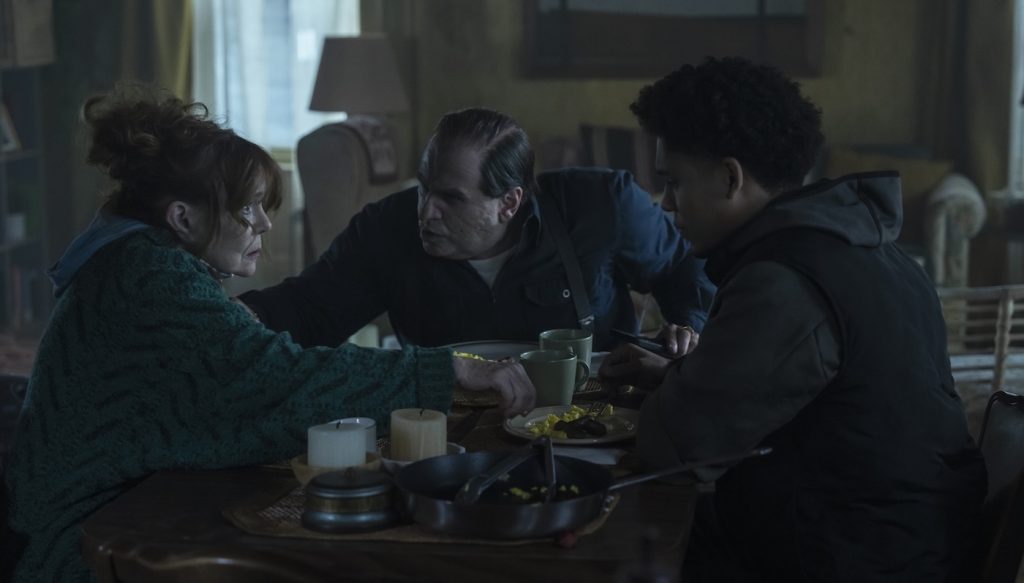
Yet while The Sopranos and other mob classics, from Goodfellas to The Godfather, had memorable female roles, you’d also be forgiven for arguing that The Penguin might have delivered one of the most unforgettable thanks to the sizzling, kinetic performance by Cristin Milioti as Sofia Falcone, a crime boss’s daughter turned brutalized scapegoat and eventual avenging dark angel. It turns out you can tell a story about Gotham that includes neither the story of Bruce Wayne’s tragic childhood, a piece of Americana as deeply baked into our collective consciousness as anything that happened in our actual history, or the Joker, the perpetually unstable, cackling sociopath in clown paint, and keep people riveted and DC Comics fans happy. That’s quite a feat.
“I think everybody involved, from the producers on down, made [this series] the adult version,” says hair department head Brian Badie. “This particular DC world comes from The Batman and Matt Reeves and [executive producer] Dylan Clark. Matt was the genius behind this world, so I knew the bar was set high, and I did not want to disappoint him. I worked closely with Dylan, who was on set daily throughout the design process. He was my go-to when it came down to design approval anytime I knew I was entering The Batman side of this show, and he was amazing to work with.”
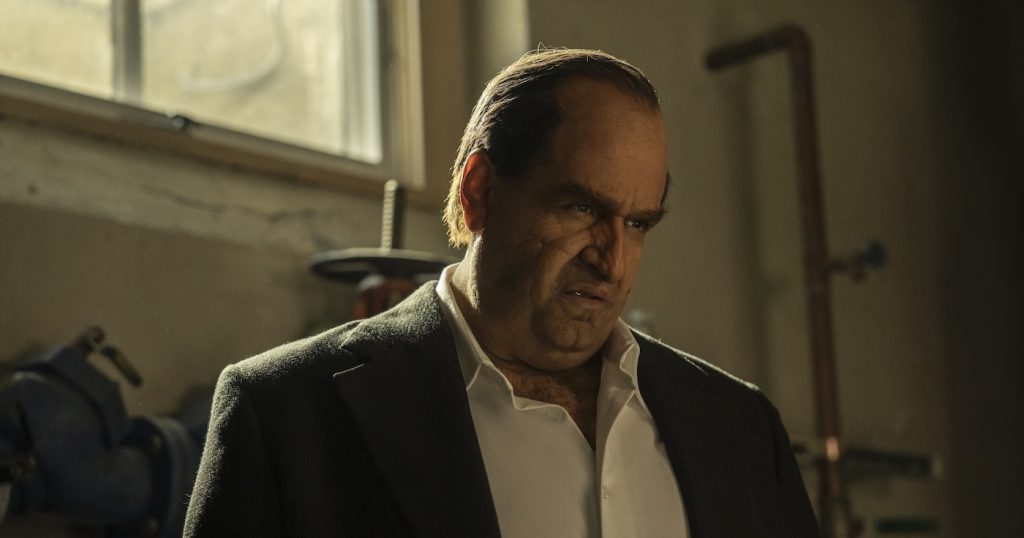
The Penguin was filmed in New York (The Batman duped London for Gotham), and Badie took advantage of this fact by hiring local talent to round out his team, bringing in key hairstylist Jenn Vasilopoulos and additional hairstylist Mariko Miyagi. “I wanted to see what newer talent was out there in NYC. They both turned out to be amazing! I’m so happy to have met them, so now I have even more amazing talent to work with.”
Badie was integral in keeping the peace between the adult crime drama that was The Penguin’s dark heart and the DC Comics-inspired world of Gotham embedded in The Penguin‘s soul. Colin Farrell’s Oz Cobb isn’t so much a departure from the Batman foil created by Bill Finger and Bob Kane but a roughed-up, pathologically insecure, mother-obsessed gangster. He’s no longer named Oswald Cobblepot as he was in the comics and previous cinematic iterations, and he no longer comes from a rich family, like Bruce Wayne, but instead was raised in the rough and tumble Crown Point, on Gotham’s east side, destroyed at the end of The Batman. Farrell’s transformation into the scar-faced, barrel-chested, savagely canny brute began in The Batman, but that scene-stealing performance in the film was also brief—he was only in the movie for a handful of minutes. Leading his own series required him to be on set savagely early, and for Badie and The Penguin‘s creative team, including makeup designer Mike Marino, to work for hours every day to ensure he remained perfectly unrecognizable until he became utterly unforgettable.
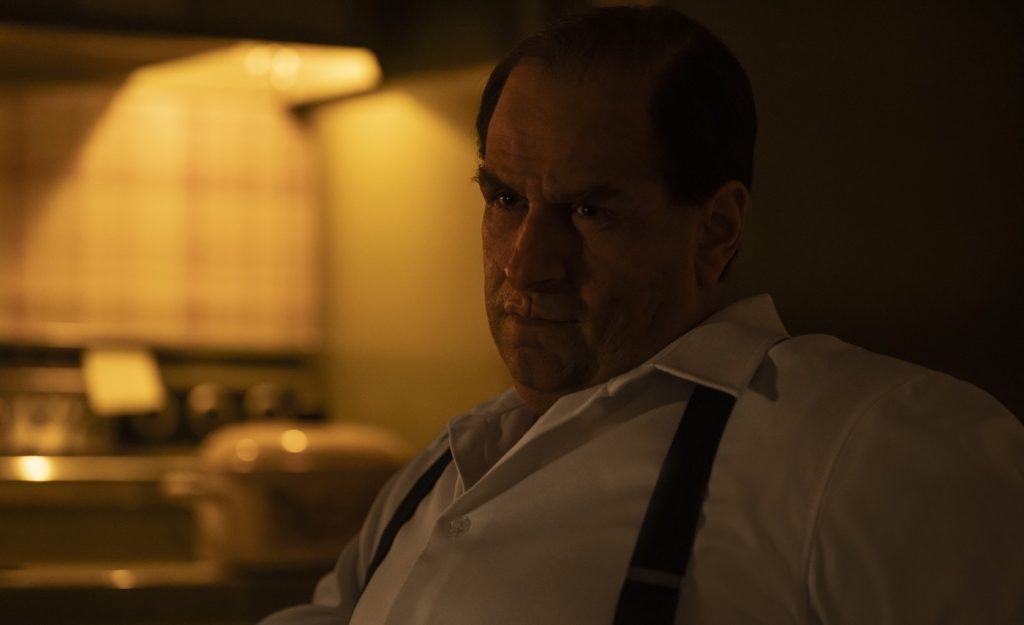
“Colin had a three-hour pre-process before my pre-call,” Badie says. “So, let’s say the crew call is at seven in the morning, my crew call might be at five, and Colin’s call time might be three or four in the morning. I loved bringing the Penguin to life and working with Mike Marino and his team because he’s a genius.”
Marino had worked out the look for the Penguin in The Batman, but the requirements to do that day after day for eight months were different and far more arduous. “They shaved his head into a halo, and he was completely bald because they shot him for less time in the film,” Badie says. “But we shot for eight months in the series, so Colin didn’t want to shave his head. So now we had to figure out a way to plaster down this circular halo shape of his own hair using glue, spirit gum, and things like that. Once we plastered it down to a bald cap, Diana Choi made the wig”
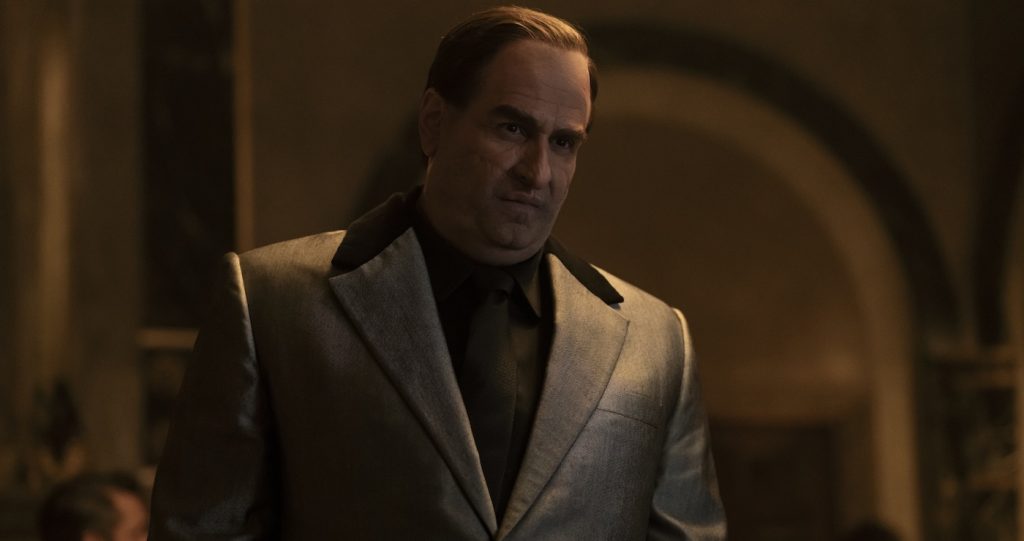
For the first month of filming The Penguin, Badie helped apply Farrell’s wig and secure it, and then razor cut it to ensure it blended in on the sides and the color match was perfect. Then came the hairspray. “That was a daily chore, and it took some time to match it with the length of Colin’s hair and that topper piece we put on him,” Badie says. “It wasn’t the easiest thing to do, especially with the Penguin’s movements and elements like the wind, which could all be obstacles. The challenge was to get rid of his hair in a perfect, smooth formation as if he were bald. Then, once it’s gelled down, special effects get involved, and I step back.”
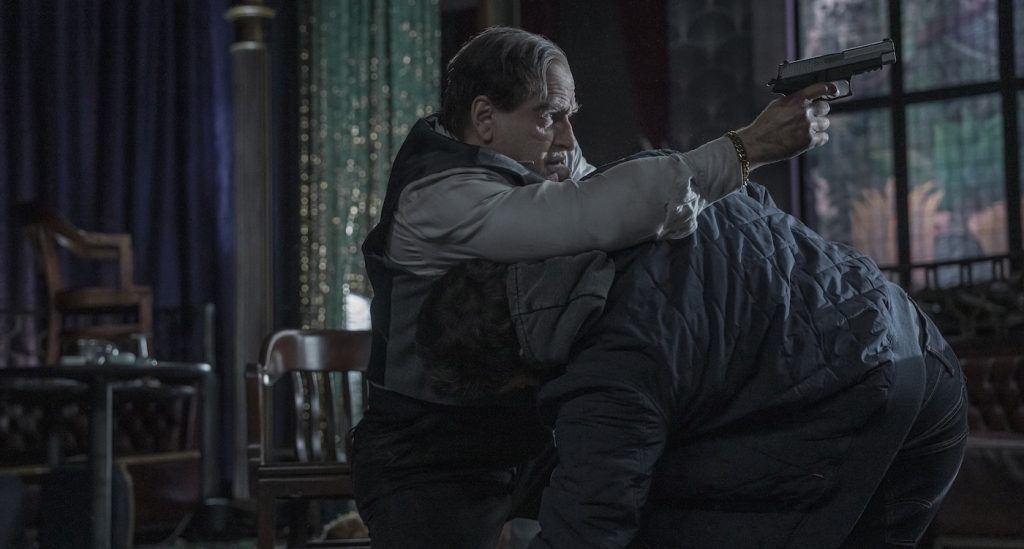
With Farrell’s performance, Oz Cobb’s relentless pursuit of more power, seeded by an impoverished childhood and a homicidal need for approval from his mother, would have made for a fine series, but The Penguin thrives because his chief rival, Milioti’s Sofia Falcone, exposes him in a way no other character can. Oz began his climb up the underworld ladder as Sofia’s driver and is the reason she eventually ended up in Gotham’s seventh circle of hell, Arkham Asylum. This betrayal was the accelerant that lit The Penguin from within.
As The Penguin got going, there appeared to be a fragile partnership between Oz and Sofia, but considering the series’ cold opening revealed Oz killing her brother Alberto (Michael Zegen), it was a partnership built to explode. It was in episode 4, “Cent’Anni,” that revealed Oz’s complicity in Sofia’s banishment to Arkham, where she spent a miserable decade of confinement.
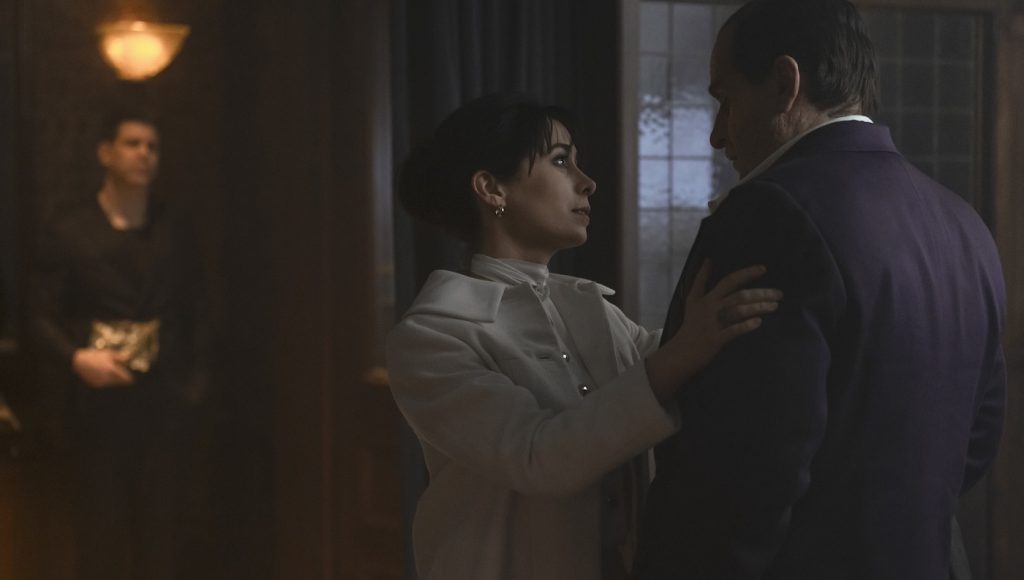
“I love storytelling through the art of hairstyling. It’s not just beauty and looks—I love getting my hands dirty with the character and telling the story, and Sofia’s arc has so many moods and moments throughout the series,” Badie says. “She starts as this innocent, daddy’s girl type of thing before being thrown in Arkham. You have this whole psychotic world she has to go through, and then goes into the aftermath of Arkham when she’s plotting and presenting herself in a certain way.”
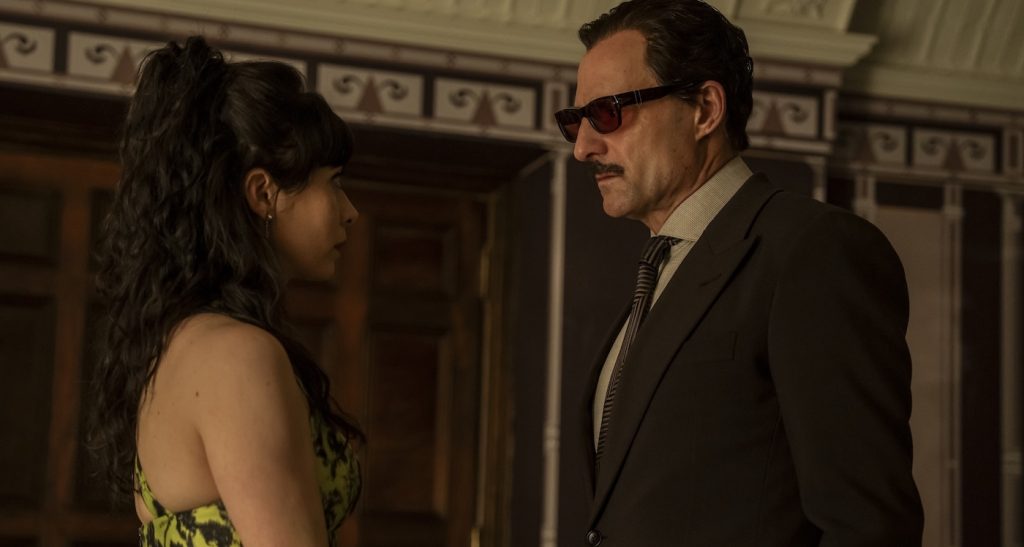
When we meet Sofia in flashbacks as her father’s chosen successor to his empire, Badie gave her hair an innocence, including a ponytail, “as if she just threw half her hair up, half down, which reads as a younger style.” But it’s Sofia’s clandestine meeting with Summer Gleeson (Nadine Malouf), a Gotham Gazette reporter who reveals that the serial suicides at her father’s club aren’t suicides at all—they’re murders. Sofia eventually pieces together that Carmine is the killer, and her mother might have been his first victim. When Oz reports Sofia’s meeting back to Carmine, her father frames her for the killings. Arkham awaits.
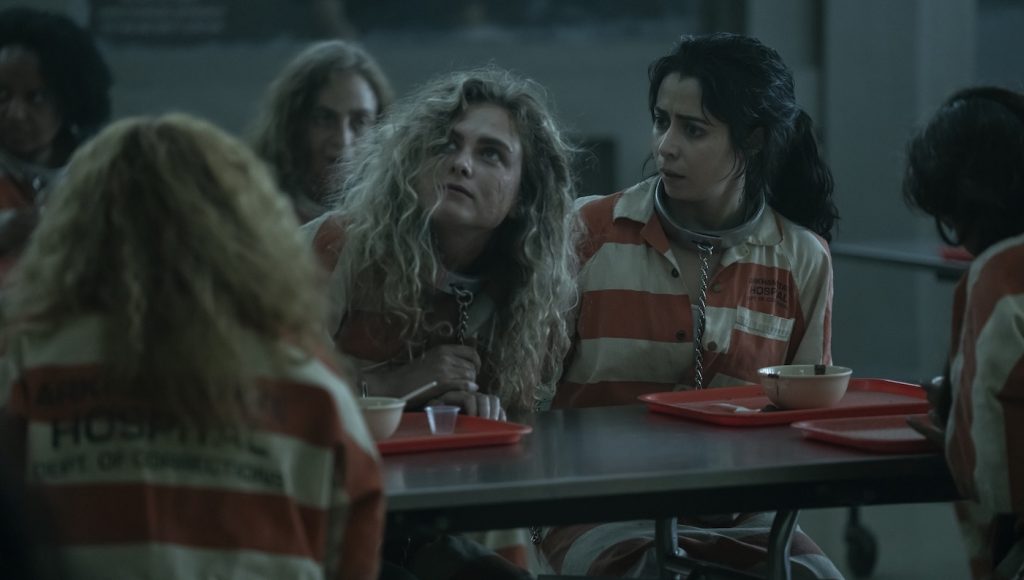
“In Arkham, she’s being deconstructed as they’re breaking her down,” Badie says. “It might seem like her hair’s just messy, but it really tells the story of her mood. In Cristin’s moods, I tried to match the hair with the energy she was feeling in the moment. It wasn’t so much of a hairstyle for me; it’s almost like her hair was its own conversation, its own story, that helps the audience understand what she’s feeling.”
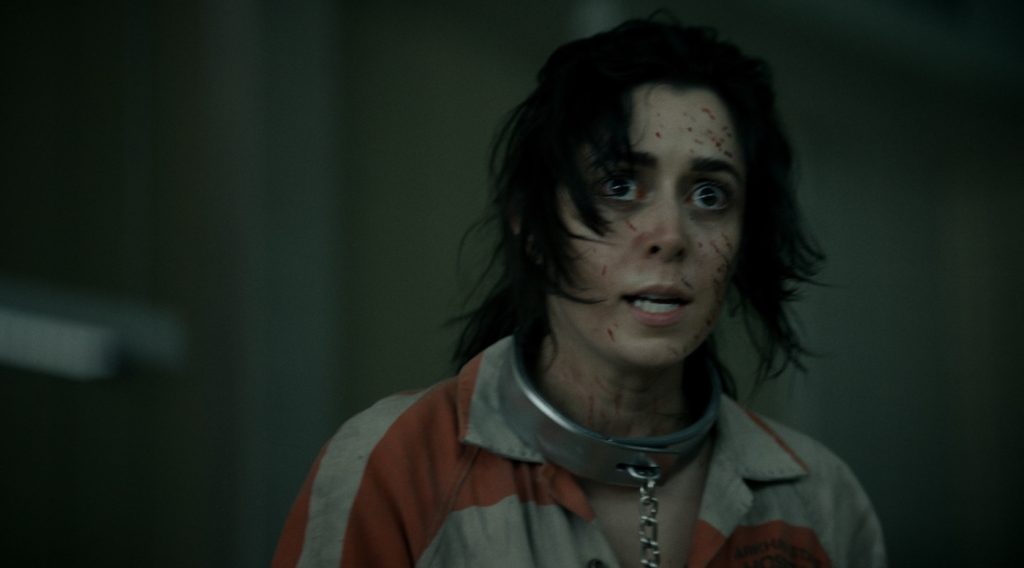
Once out of Arkham, Sofia’s mission is revenge and capture; revenge on everyone who put her in Arkham and capture the family crime business by any means necessary. Badie gives her post-asylum look more structure as she tries to project to her family (betrayers, all) and Gotham at large that’s put together. “She has the classic up-do chignon. Her costumes were very elegant but a little conservative and unassuming, unthreatening,” he says. “But the whole time she’s plotting—her bangs are there for a reason; she’s a little bit hidden, the bangs are like claws, showing a little bit of that evilness that Oz doesn’t know, but the audience can clearly tell she’s calculating.”
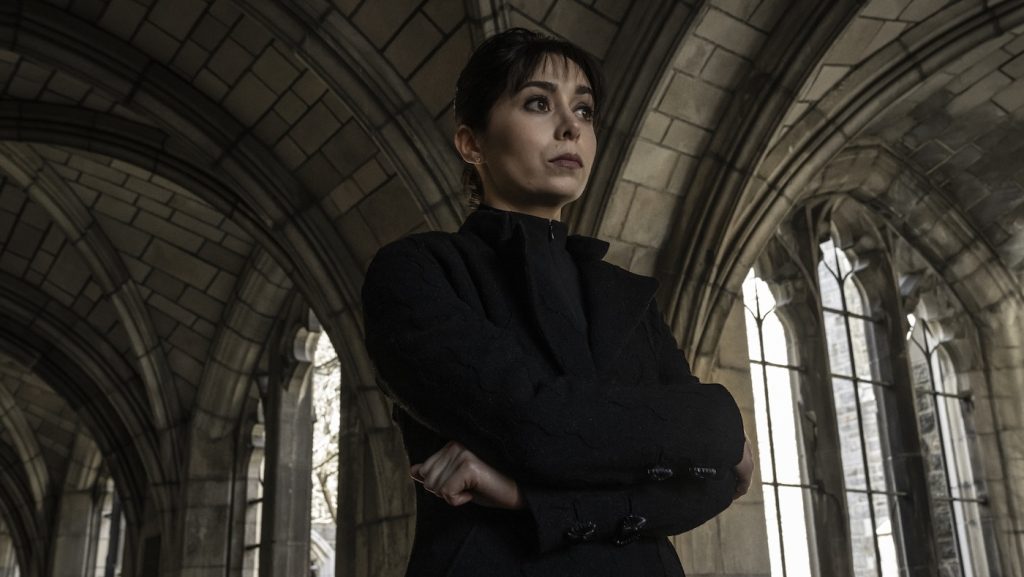
Sofia is the Penguin’s equal, and that is put on full display at the end of “Cent’Anni,” when she calmly takes her niece, Gia (Kenzie Grey), outside of the expansive mansion where the extended Falcone family lives so that she can return inside, in a stunning yellow dress and a gas mask, and confirm all the adults (save for Johnny Viti, played by Michael Kelly, whose window was left open as he will be useful to her later) have been gassed to death.
“I upped the energy of hair when her craziness is completely unleashed,” Badie says. “You saw that in episode four when she’s wearing the yellow dress, and we have the big reveal. I had somebody on Facebook send me a message saying, ‘When Sofia came down in that yellow dress, I knew what mood she was in by her hair.’ They knew she was about to do some crazy sh*t, and to me that’s success. It wasn’t, ‘Oh my God, I love her hairstyle.’ No, they saw her change from the previous scene to that scene and knew she was about to blow some sh*t up.”
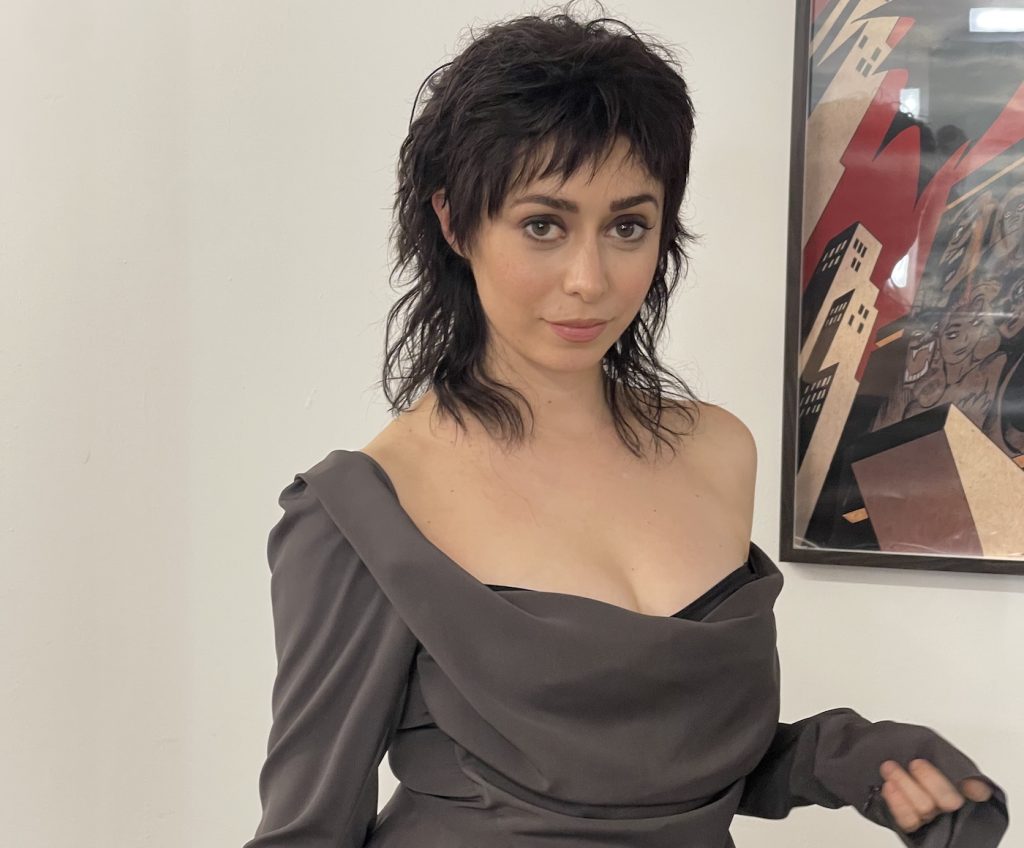
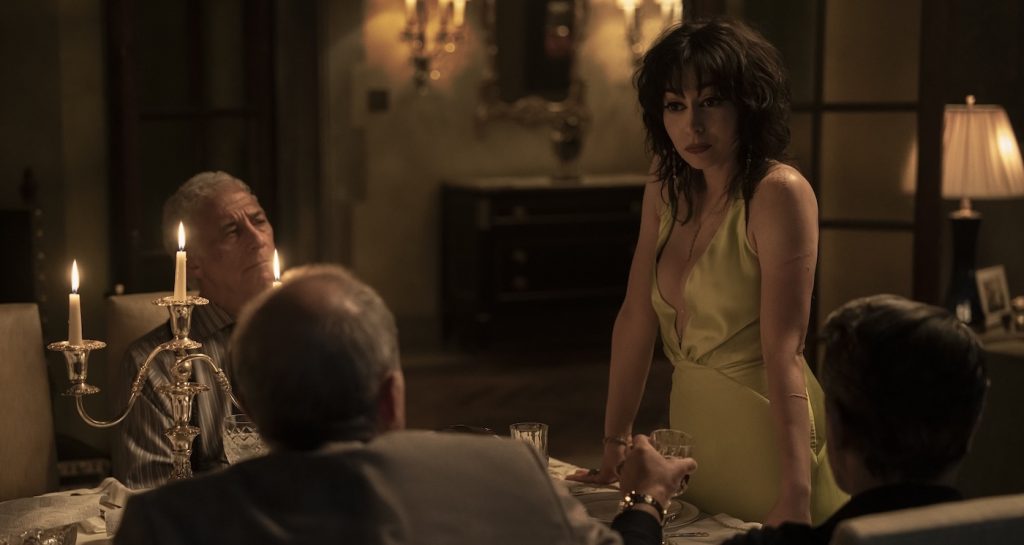
But Badie was careful not to turn Sofia into Carmela Soprano.
“You can just tell from the set design and the cinematography that it has a very dark underground feeling,” Badie says. “Clearly, Sofia’s Italian, and that factors in, but if I were doing a Sopranos-type show, something quintessential mob, I would have made the hair more polished because those girls believed that every hair must be in place. But Sofia’s hair never looks over-stylized, and Cristin was on board with this because she has an acute eye for fashion and and hair. Gotham looks like a tragedy. So I felt like that’s how the hair should be. I feel like Oz should be one of the most polished people in the whole story.”
As The Penguin progressed and Oz and Sofia’s partnership disintegrated into all-out war, Badie helped emphasize Sofia’s metamorphosis into a crime boss with a heaping helping of rage by taking out any hint of salon-cut hair. “She’s starting to cut her own hair; she’s going into this jaggedness because she’s a bit manic and crazy, so the hair can’t be absolutely perfect,” he says.
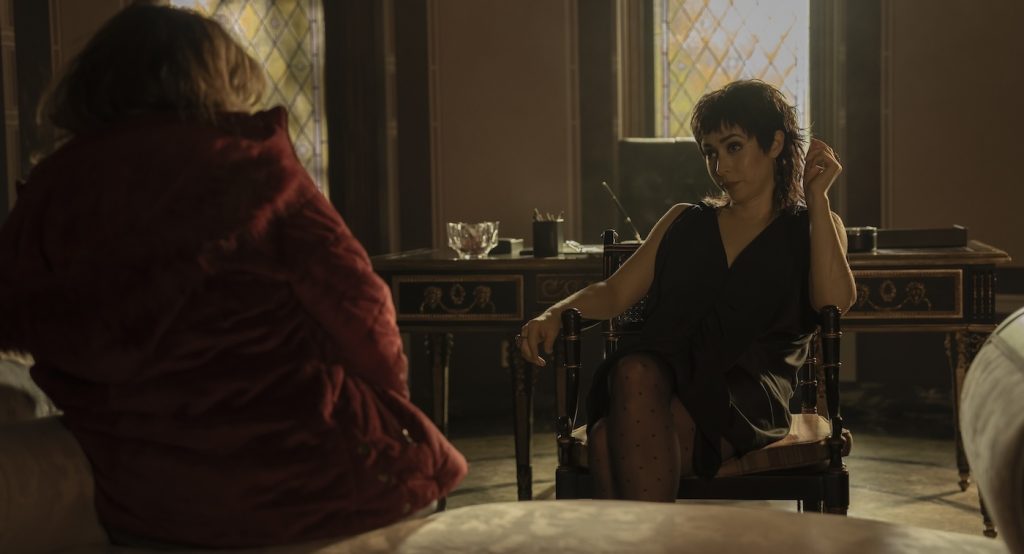
For Oz’s surrogate son Victor, Badie made sure it looked like he had zero time to style his hair, given all the work he does for Oz. Victor starts the series trying to boost the rims of Oz’s fancy purple sports car and ends the series, having become Oz’s most dependable ally and someone Oz fears he might love, being strangled to death for his service and love for Oz.
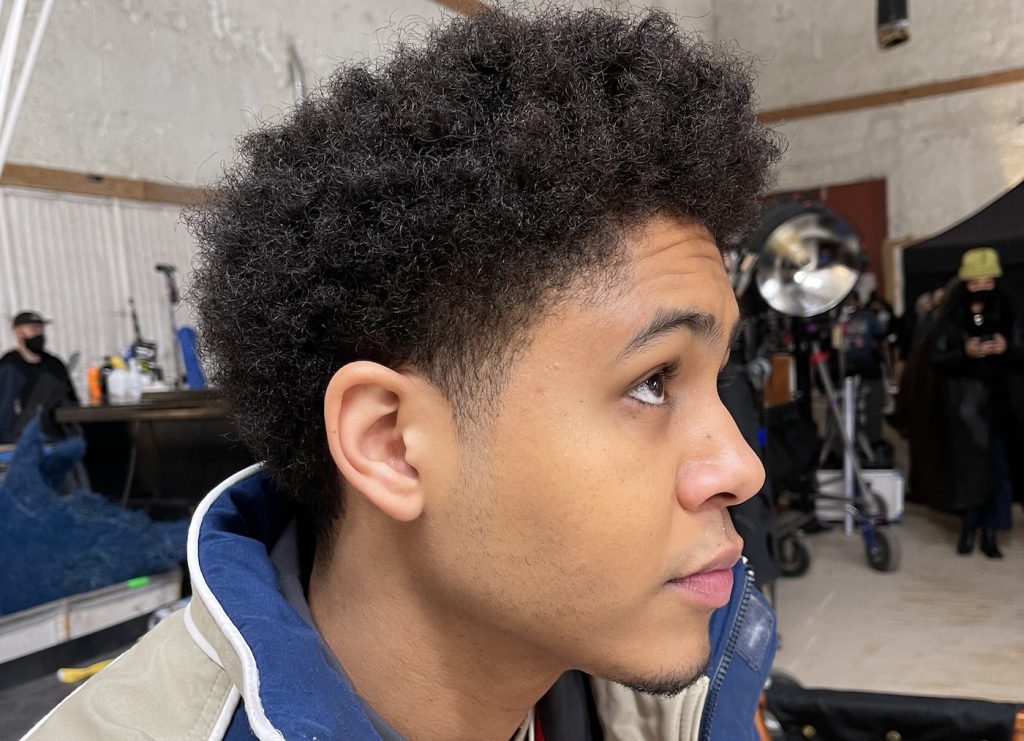
“For Victor, he’s a New York guy. He’d have his hair really faded, always perfect with sharp edges and lines, but I gave him a fade, and his hair was always a little unkempt,” Badie says. “It had a silhouette and angles, but at the same time, the texture was there, and it didn’t look like he styled it. He’s running behind Oz; when does he even go home and shower? We don’t even know that. So we’re not going to overstyle his hair like he’s Puerto Rican or Dominican in Washington Heights and is in a barber shop every two or three days. That’s how I kept the series less New York City and more Gotham.”
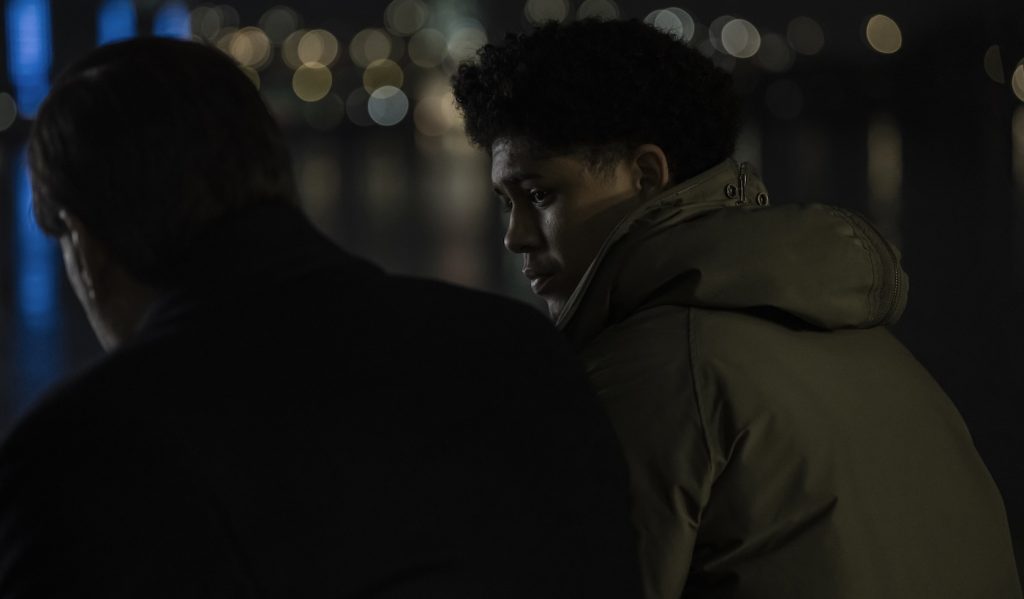
Featured image: Cristin Milioti and Colin Farrell. Photograph by Macall Polay/HBO.



